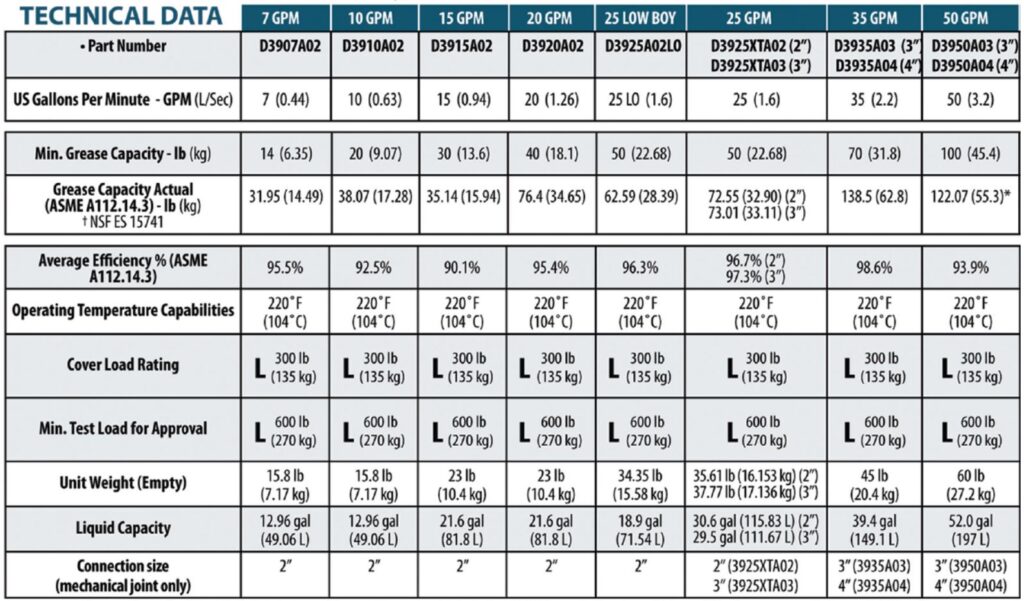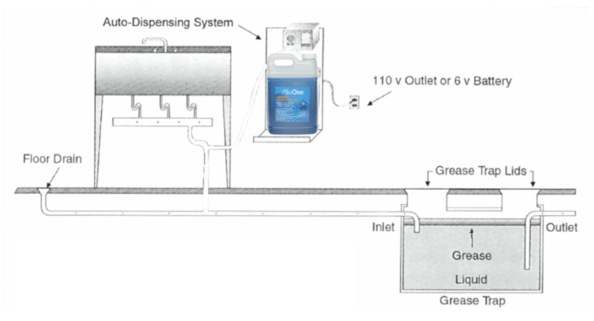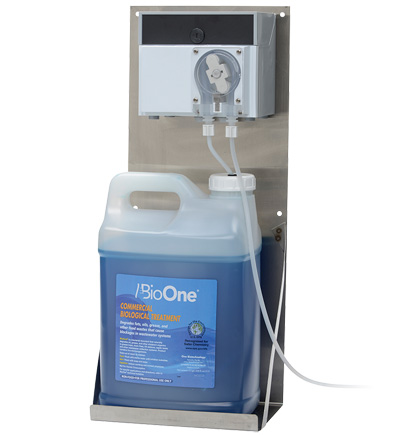
Are you looking for ways for your business to save money and help the environment? You may be surprised that the answer could lurk in your restrooms! Many companies, from medical facilities to restaurants and stadiums, are switching to waterless urinals, which can reduce water usage by thousands of gallons per toilet every year. They’re easy to install and can integrate into existing bathrooms, so whether you are planning a new build or looking to retrofit an existing restroom, waterless urinals can be the cost-saving, environmentally-friendly solution you were looking for.
What is a Waterless Urinal?
When a traditional urinal is emptied using a flushing mechanism, water is introduced to the basin to move the urine through the drain. Waterless urinals work differently. When someone uses a waterless, or no-flush, urinal, the urine flows to the drain without the use of water. The drain is fitted with a specifically designed cartridge to handle the odors associated with urine. These cartridges employ a variety of patented technologies that incorporate traps and oil based barriers to keep the urine smells out of the bathroom.
While the functionality of a waterless urinal is different, the look of the urinal is quite similar. In fact, you may have seen or used a no-flush urinal without even realizing it! They can be purchased in fiberglass, stainless steel, and vitreous China, and most waterless urinals are designed to fit into conventional and existing plumbing systems. This means making the switch to waterless is easier than you think.
The Benefits of Using Waterless Urinals for Your Business
Save Money
According to the EPA, older traditional urinals can use up to 26,000 gallons of water per year. At the same time, newer models are now restricted to 1 gallon per flush, which could quickly add up, especially in public spaces with heavy restroom usage. The alternative is a waterless urinal, which uses only a few gallons of water per year for cleaning and maintenance. This drastic reduction in utility costs could allow you to invest in and grow other areas of your business.
Increase Hygiene
While it can be unpleasant to think about, traditional toilets and urinals spray particulates into the air every time they are flushed. Users are also exposed to bacteria and microbes when they pull down on the flushing mechanism. Waterless urinals provide a no-touch solution for users, and bacteria remain in the basin itself, not the air. Increased hygiene in the bathroom could impact your employees’ health and your patients’ safety over time.
Reduce Odors
Have you ever walked past a public bathroom and smelled urine, even while the door was closed? That’s because flushable urinals spray urine particles throughout the air, and the standard odor control, the urinal cake, may not catch all of the urine as it travels toward the drain. The drain in a waterless urinal is designed to control odors. Once the urine moves through the cartridge, it, and the odor that comes with it, is sealed tightly in the drain pipe. This means no one outside the bathroom should catch a lingering smell.
Simplify Maintenance
The waterless urinal’s simple design is one of its best features. Without a flushing mechanism, water tank, or flapper, the need for repairs is minimal. Regular replacement of the cartridge and seal, along with minor cleaning, is all that is needed to keep your waterless urinal working effectively for years to come.
The Environmental Impacts of Switching to Waterless Urinals
Everyone understands the importance of water conservation, but making changes to our daily habits, from watering the lawn less frequently to taking quicker showers, aren’t always easy or enjoyable. Fortunately, switching to waterless urinals isn’t just simple, it’s beneficial to your business, and the impact will be huge. Imagine saving 26,000 gallons of water per toilet per year!
The U.S. Green Building Council recognizes this impact, as well. If you are looking to qualify for LEED certification, installing waterless urinals will help your business earn credits for water reduction. Your water utility company may even offer rebates or incentives for making the switch to a no-flush system.
Consider Waterless Urinals for Your Business
Installing waterless urinals provides many benefits to both your business and the environment. Are you looking for a solution backed by years of proven technology? The Purleve ZeroFlush Urinal, in combination with Purleve Liquid Odor Barrier and Purleve EnviroSeal, is a waterless system that is easy to install and even easier to maintain. As your utility bills drop, you’ll have peace of mind, knowing that you aren’t just saving money, you’re benefitting the environment as well.









